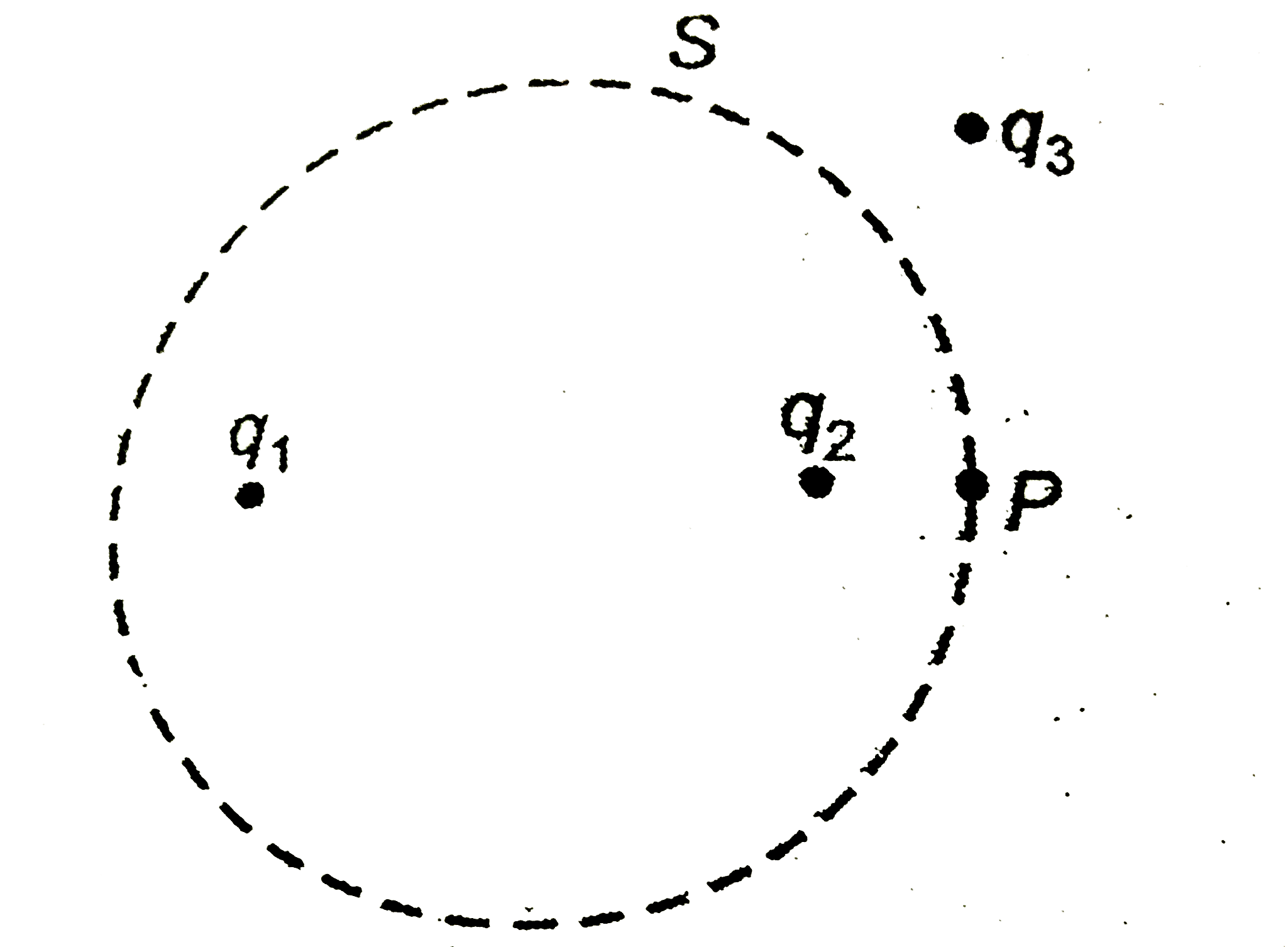If the size of the gaussian surface increases, the flux through the body:
decreases
Increases
remains the same
fluctuates
The correct Answer is:C
To solve the question about the relationship between the size of the Gaussian surface and the electric flux through the body, we can follow these steps:
Step 1: Understand Gauss's Law
Gauss's Law states that the electric flux (Φ) through a closed surface (Gaussian surface) is directly proportional to the total charge (Q) enclosed within that surface. Mathematically, it is expressed as:
Φ=Qϵ0
where ϵ0 is the permittivity of free space.
Step 2: Analyze the Effect of Increasing the Gaussian Surface Size
When we increase the size of the Gaussian surface, we need to consider whether it encloses more charge or not. If the charge enclosed remains the same, then according to Gauss's Law, the electric flux through the surface will also remain the same.
Step 3: Conclusion
Therefore, if the size of the Gaussian surface increases but the total charge enclosed does not change, the electric flux through the body remains constant.
Final Answer
The flux through the body remains the same regardless of the size of the Gaussian surface.
---
Gauss's Law states that the electric flux (Φ) through a closed surface (Gaussian surface) is directly proportional to the total charge (Q) enclosed within that surface. Mathematically, it is expressed as:
Φ=Qϵ0
where ϵ0 is the permittivity of free space.
When we increase the size of the Gaussian surface, we need to consider whether it encloses more charge or not. If the charge enclosed remains the same, then according to Gauss's Law, the electric flux through the surface will also remain the same.
Therefore, if the size of the Gaussian surface increases but the total charge enclosed does not change, the electric flux through the body remains constant.
The flux through the body remains the same regardless of the size of the Gaussian surface.
Topper's Solved these Questions
- BOOK - EDUCART PUBLICATIONCHAPTER - SAMPLE PAPER 2EXERCISE - SECTION-B24videos
SAMPLE PAPER 2
- BOOK - EDUCART PUBLICATIONCHAPTER - SAMPLE PAPER 2EXERCISE - SECTION-C6videos
SAMPLE PAPER 2
- BOOK - EDUCART PUBLICATIONCHAPTER - SAMPLE PAPER 04 (SOLVED)EXERCISE - SECTION-C6videos
SAMPLE PAPER 04 (SOLVED)
- BOOK - EDUCART PUBLICATIONCHAPTER - SAMPLE PAPER 3EXERCISE - SECNTION -C6videos
SAMPLE PAPER 3
Similar Questions
Knowledge Check
- Question 1 - Select One
A Gaussian surface encloses a proton p. The electric field at any point on the surface is vec€. The flux linked with the Gaussian surface is ϕ.
STATEMENT-1 : When an electron is kept close to this system outside the Gaussian surface, the flux linked with the surface would change.
and
STATEMENT-2 : The presence of electron will alterthe electric field on the gaussian surface.AStatement-1 is True, Statement-2 is True, Statement -2 is a correct explanation for Statement-1BStatement-1 is True, Statement-2 is True, Statement-2 is NOT a correct explanation for Statement-1CStatement-1 is True, Statement -2 is FalseDStatement-1 is False, Statement-2 is True. - Question 2 - Select One
Three point charges are placed as shown in the figure. S is a gaussian surface ϕ is the net flux passing through surface A and E be the electric field at point P on the surface, then
 AFlux ϕ is due to q1 and q3 onlyBFlux ϕ is due to q1 and q2CElectric field at point P is due to q1 and q2 onlyDFlux ϕ is due to q3 only
AFlux ϕ is due to q1 and q3 onlyBFlux ϕ is due to q1 and q2CElectric field at point P is due to q1 and q2 onlyDFlux ϕ is due to q3 only
A point charge is placed at the centre of spherical Gaussian surface. Is electric flux ϕE changed if
(a) The sphere is replaced by a cube of same or different volume ?
(b) The charge is moved off-centre in the original sphere, still remaining inside ?
( c ) The charge is moved just outside the original sphere ?
(d) A second charge is placed near the outside to the origianl schere ?
(e) A second charge is placed inside the Gaussian surface ?View SolutionSlection Of Gaussian Surface
View SolutionA spherical Gaussian surface encloses, and is concentric with, a charged spherical conductor. If the TNEI over the Gaussian surface is negative, what can you say about the electric field →E at a point on the surface?
View SolutionA spherical Gaussian surface encloses a charge of 8.85×10−8C (i) Calculate the electric flux passing through the surface (ii) If the radius of Gaussian surface is doubled, how would the flux change ?
View SolutionIf net flux through a Gaussian surface is zero, then find whether the following statements are correct or not.
The net charge inside the surface is zero.View SolutionSelection Of Gaussian Surface
View Solution

